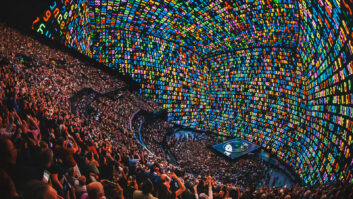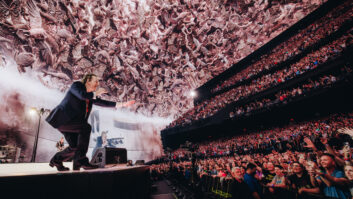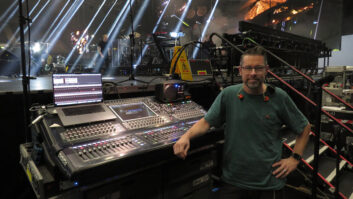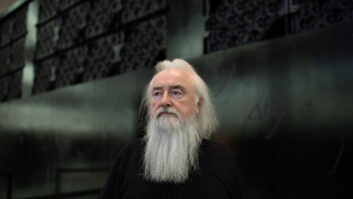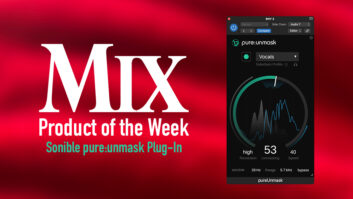
Over the course of six albums, Canadian foursome Metric has evolved into a heavy-hitting contender in modern rock. Which makes the group’s resident gearhead, co-producer and guitarist Jimmy Shaw’s decision to make their latest, Pagans in Vegas, an analog modular synth-based affair a bold move. The band members, who live in various cities around North America, come to Shaw’s home studio in the back of his house—where the album is recorded in its entirety—in Toronto once he has definitive parts on which they can work.
“The main instrument that dictated what the record was going to be and led the sound is a 66-unit synthesizers.com modular synth,” states Shaw, citing the tracks “Cascades” and “Celebrate” as examples. “There was a very simple patch I kept being drawn to: a dual voice patch where the bass was being played with the left hand with sequences creating a pattern, and the right hand is playing the melody using a whole other set of oscillators.”
Shaw tasked himself with writing a song in two hours in sessions he calls “the daily jams” from which Pagans in Vegas has emerged. Shaw paraphrases Metric’s longstanding mix engineer, John O’Mahony’s (who more often than not ends up finishing the production on every album) advice about modular synths to him: “These are what they are. Don’t try and turn it into a whole other thing. It has a vibe unto itself. Keep it simple, keep it minimal and let it speak for itself in its own way.”
As part of keeping the instrument’s integrity, Metric recorded to tape and left out not only plug-ins, but also outboard reverb. Instead they went for tubes, valves and classic compression. “We found the tape machine became this extra personality in the band,” says O’Mahony. “We would press ‘record,’ the wheel started spinning around, and it changed the mood and attitude of everything we were doing. It wasn’t just a sonic character we were building. It got more serious. When we were recording on computer, everybody felt like they were writing a demo, but when we were recording to tape, it felt like we were making an album.”
